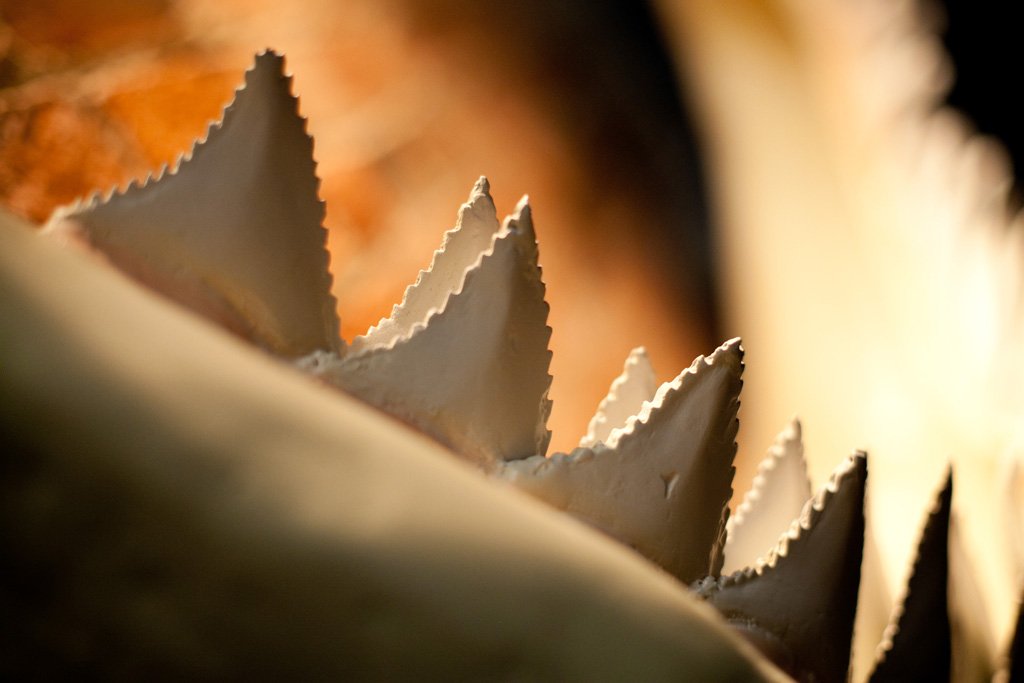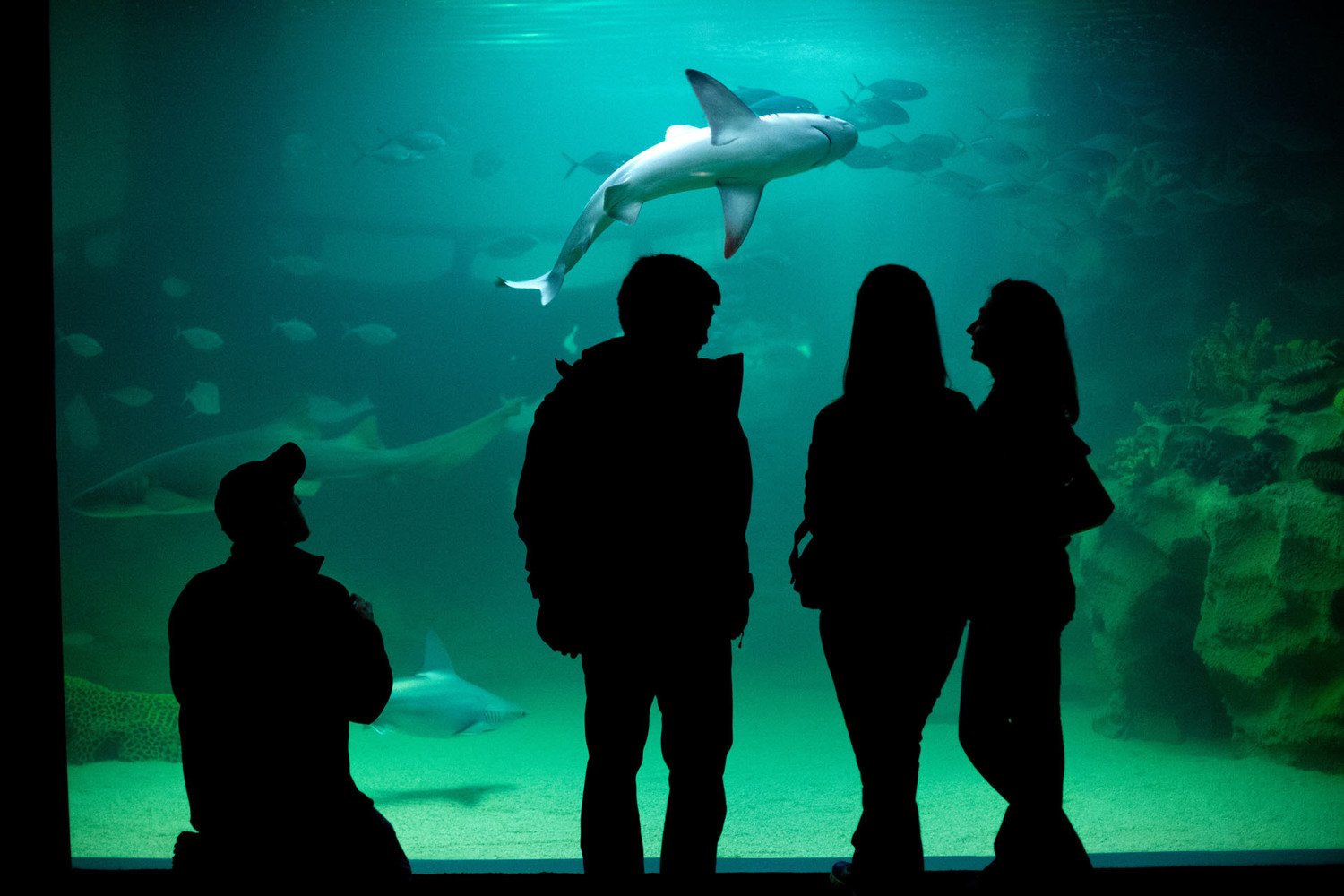Blue Depths of Cleveland: An Aquarium Experience
I finally made a trip down to the old Powerhouse building to view the new Cleveland Aquarium. I knew that going on a weekend (Saturday in my case) would most likely mean a larger crowd and that was definitely the case. I brought my mother along so she could see the Aquarium for the first time as well. At $21.95 for adults and $15.95 for children (ages 2-12), the entry fee for a family of four can cost you a decent investment. The Admission fee may scare a few people away but the rates are on par with Aquariums in other cities.
If you do decide on visiting the Aquarium on the weekend, purchase your tickets online athttps://secure.greaterclevelandaquarium.com/ to avoid long ticket lines. My mother and I did not purchase tickets in advance and we waited about 10-15 minutes in line to purchase tickets. The new Aquarium is located in the basement level of the Powerhouse building – where the old Howl at the Moon use to be . Moving at an average pace should get you through the exhibit in about an hour and a half.
The layout is divided into four zones. The first room includes a few tanks that hold fish local to our area (Bluegill, Sunfish, Walleye, Largemouth Bass, Smallmouth Bass, Crappie, etc…). If you’ve fished any of the Ohio waters you’ll be able to recognize a vast majority of the fish species in this zone.
The second zone includes reptiles and fish that you would find in swampy areas (catfish, alligators, etc..). In the center of this room is a large aquarium that you can look into from up above (open aquarium). This aquarium is in the center of the zone 2 room and is oval in shape.
Before entering zone 3 you’ll walk under the Powerhouse smokestack that contains an exhibit of spiny lobsters on the ceiling of the corridor. I added two photos from this area (the smokestack and the lobsters) and you can view the large version by clicking on the thumbnail image to the right.
Zone 3 is where you will find the touch pool. You can touch several types of starfish, stingrays, crabs and a few other species of crustaceans in the touch pool (supervised by an Aquarium staff member of course). Kids usually get a kick out of this zone and plan on spending a decent amount of time here. This, unfortunately, will likely be the most crowded part of the exhibit. In this zone you’ll also come across a few reptiles such as the Bearded Dragon and a few caiman. This area is separated into three sub-zones: Florida Keys, Weird and Wonderful, and Coastal Salt-water fish.
The fourth zone is where you’ll find the sharks. This zone features a 150-foot-long plexiglas tunnel (SeaTube) where you can view sharks 180 degrees around you. Walking through this zone places you right inside a salt habitat that host over 15 sharks.
My only complaint, other than the crowd, was that the Aquarium did not have enough signs describing what species of fish was in each tank.









PHOTOGRAPHERS
I’m not sure if the Aquarium allows tripods but even if they did, I wouldn’t use one. Fish are constantly moving and a slow shutter speed will not work for you. Your best bet is to bring in a fast lens (F2.8 or faster) and shoot wide open. Image stabilization will be of no help when things you’ll be photographing are constantly moving.
I used three different lenses during my tour throughout the Aquarium. The Canon 24-70 F2.8L, Canon 50mm F1.4, and the Canon 70-200 F2.8L IS were my lenses of choice. I did not, nor I would recommend, use flash photography. The flash will reflect off of the glass and you won’t get good results. Use your camera’s ISO to your advantage and try to keep the shutter speed up (no slower than 1/50th). Most of my images where shot at high ISO (between 1600 and 3200), large apertures (F2.0 to F2.8 – with the exception of the tower shot), and shutters speeds between 1/50th and 1/200th sec).
The color temperature will range from 3000K to 4000K (depending on what zone you’re in). There’s a ton of green water all around and your images will have a green cast as a result. You can either do a color shift in-camera or add magenta in post to offset the over green look. Chances are pretty good that you’ll most likely be posting your images online (not for print) so don’t be afraid to use your cameras HIGH ISO settings. DON’T pixel peep. You won’t see much noise in small web images (especially on Facebook).
You can view a selection of photos below or you can go directly to my online gallery at https://photos.dalemcdonaldphotographer.com/Places-Parks-Museums/Museums/Cleveland-Aquarium
If you want to view the EXIF data of any shot, go to the link listed above, hover over the large preview image on the right side of the gallery page and click the I (for Information) icon. This will display a toolbar listing all of my camera’s EXIF data.


